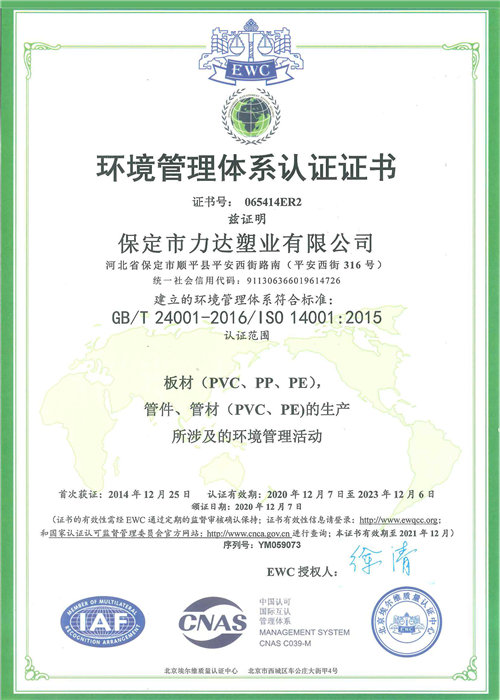Sep . 30, 2024 23:37 Back to list
Understanding PVC and PPR Pipes and Fittings for Efficient Plumbing Solutions
Understanding PVC and PPR Pipes and Fittings
In modern plumbing and construction industries, the materials used for pipes and fittings play a crucial role in ensuring durability, efficiency, and safety. Among the various options available, PVC (Polyvinyl Chloride) and PPR (Polypropylene Random Copolymer) pipes and fittings have gained significant popularity for their distinct advantages. This article explores the features, benefits, and applications of these two types of pipes, providing valuable insights for professionals and consumers alike.
PVC Pipes and Fittings
PVC pipes are widely recognized for their versatility and affordability. Made from a plastic polymer, PVC pipes are lightweight, resistant to corrosion, and have a long lifespan, which makes them ideal for numerous applications. One of the primary advantages of PVC pipes is their resistance to a wide range of chemicals, making them suitable for both residential and industrial plumbing. Additionally, PVC pipes do not corrode like metallic pipes, thereby reducing maintenance costs over time.
The installation of PVC pipes is typically straightforward, as they can be easily cut and joined using solvent cement or adhesives. This ease of use contributes to faster construction timelines and lower labor costs. PVC fittings, including elbows, tees, and connectors, complement the pipes and ensure smooth transitions and connections within plumbing systems.
However, it is essential to acknowledge that PVC pipes can be sensitive to extreme temperatures, becoming brittle in cold conditions and losing integrity in high heat. Therefore, while they are excellent for many applications, they may not be the best choice for hot water systems.
pvc ppr pipes and fittings

PPR Pipes and Fittings
PPR pipes, on the other hand, are often referred to as the future of plumbing. Made from a high-quality polypropylene material, PPR pipes offer unique advantages, particularly in hot water systems and for various other applications. One of the standout features of PPR pipes is their exceptional thermal resistance. They can withstand temperatures of up to 95°C (203°F) and are highly durable, making them suitable for hot water supply and heating installations.
Moreover, PPR pipes exhibit excellent chemical resistance, making them ideal for transporting potable water and other fluids. They are also resistant to scaling and deposit buildup, which helps maintain the quality of the flowing water over time. PPR fittings, such as couplings and valves, integrate seamlessly with PPR pipes, ensuring a reliable and leak-free system.
An additional advantage of PPR pipes is their fusion welding capability. This method creates a homogenous joint between pipes and fittings, eliminating the risk of leaks and enhancing the overall strength of the plumbing system. Furthermore, PPR pipes are environmentally friendly, as they are recyclable and do not contain harmful substances, making them a sustainable choice.
Conclusion
Both PVC and PPR pipes and fittings offer distinct benefits that cater to different plumbing needs. PVC pipes are an economical choice for a wide array of applications, particularly in residential settings, while PPR pipes are favored for their high-temperature performance and durability in commercial and industrial applications. When selecting the right plumbing materials, it is essential to consider the specific requirements of your project, such as temperature, pressure, and the type of fluids being transported. By understanding the advantages of both PVC and PPR pipes, consumers and professionals can make informed decisions that enhance the efficiency and longevity of their plumbing systems.
-
Durable PP Rigid Sheet: Lightweight, Chemical Resistant Solutions
NewsAug.21,2025
-
PVC Grey Sheet for Extraction: Chemical Resistant & Durable
NewsAug.19,2025
-
Durable PVC Pipe Fittings for Plumbing & Irrigation Needs
NewsAug.18,2025
-
HDPE Steel Belt Reinforced Spiral Corrugated Pipe | High Strength
NewsAug.17,2025
-
HDPE Pipe Fittings: Durable, Leak-Proof Solutions
NewsAug.16,2025
-
Premium CPVC Sheet: High-Temp & Chemical Resistant Solutions
NewsAug.15,2025

